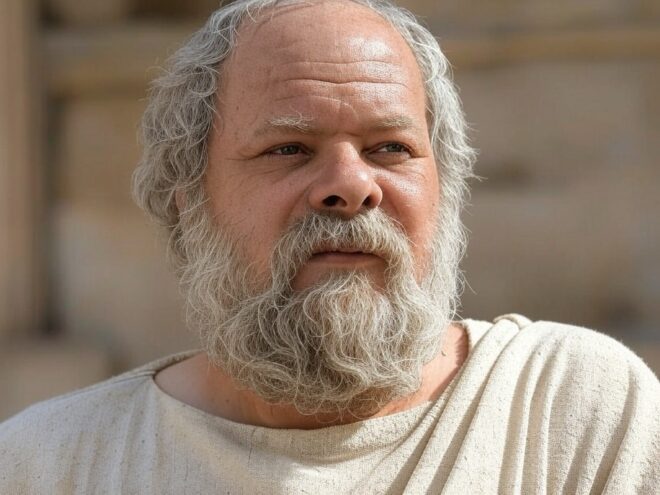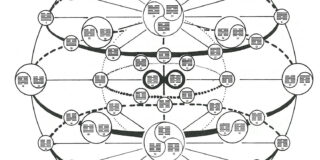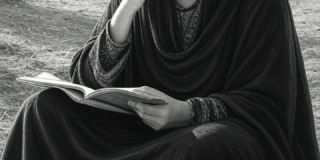
In the annals of democratic history, moments of crisis often reveal the fragility of free thought when confronted by the fervor of the crowd. From the trial of Socrates in ancient Athens to the present-day United States, mature democracies have faced recurring threats to intellectual liberty, driven by populist surges and ambitious leaders who exploit public discontent. Today, we are confronted with a contemporary challenge in America: a “mobocratic spirit,” fueled by war-weariness, economic stagnation, and anxieties over immigration, which seeks to dismantle the institutional bulwarks of free thought – courts, the press, and academia. This discussion aims to underscore the indispensable role of these institutions in preserving democracy, drawing on historical precedents and contemporary evidence to affirm the necessity of institutional fortitude in safeguarding liberty against the roar of the crowd.
I. The Philosophical Foundations of Free Thought
Free thought, the ability to reason independently and express ideas without fear of censorship or retribution, is the cornerstone of a democratic society. The prosecution of Socrates in 399 BCE serves as an early cautionary tale. Charged with impiety and corrupting the youth, Socrates was condemned by an Athenian jury swayed by public resentment and fear of his unorthodox ideas. His trial illustrates a perennial danger: when the crowd, inflamed by insecurity or demagoguery, turns against dissent, even the most enlightened societies risk intellectual tyranny. Socrates’ defence, as recorded in Plato’s Apology, emphasised the necessity of questioning authority and tradition to pursue truth – a principle that remains central to democratic governance.
In the American context, the Enlightenment ideals of John Locke and John Stuart Mill shaped the nation’s commitment to free thought. Locke’s A Letter Concerning Toleration (1689) argued for the separation of church and state to protect individual conscience, while Mill’s On Liberty (1859) championed the “marketplace of ideas,” where truth emerges through open debate rather than suppression. These principles are enshrined in the U.S. Constitution, particularly the First Amendment, which guarantees freedom of speech, press, and assembly. The framers recognised that democracy thrives not through conformity but through the contestation of ideas, moderated by institutions designed to temper the passions of the majority.
Yet, as Alexis de Tocqueville observed in Democracy in America (1835), democracies are susceptible to the “tyranny of the majority,” where public opinion can stifle dissent more effectively than any autocrat. Tocqueville warned that in moments of crisis, the crowd’s demand for conformity could overwhelm the reasoned deliberation that democracy requires. This tension – between the will of the majority and the rights of the individual – lies at the heart of the current challenge described in this discourse. To understand how institutions can counter this threat, we must first examine their historical role in American democracy.
II. The Historical Role of Institutions in Preserving Free Thought
American institutions – courts, the press, and academia – have long served as bulwarks against mobocratic impulses, ensuring that free thought endures even in times of crisis. The judiciary, rooted in the principle of judicial review established in Marbury v. Madison (1803), has consistently checked the excesses of both the legislature and the executive. During the Sedition Act crisis of 1798, when the Federalist-controlled Congress sought to silence Republican critics, the courts provided a forum for challenging the law’s constitutionality, though it was ultimately public debate and electoral change that repealed it. Similarly, in New York Times v. United States (1971), the Supreme Court upheld the press’s right to publish the Pentagon Papers, affirming the judiciary’s role in protecting free expression against government overreach.
The press, often referred to as the “fourth estate,” has historically served as a counterweight to both governmental power and public hysteria. In the 19th century, abolitionist newspapers like William Lloyd Garrison’s The Liberator faced violent mobs and censorship but persisted in advocating for emancipation, shaping public discourse and paving the way for the Thirteenth Amendment. During the McCarthy era, journalists like Edward R. Murrow exposed the excesses of anti-communist witch hunts, demonstrating the press’s capacity to challenge demagoguery through rigorous investigation and moral clarity.
Academia, though less visible in public battles, has provided the intellectual foundation for free thought by fostering critical inquiry and preserving knowledge. Universities like Harvard and Yale, established in the colonial era, trained generations of leaders who valued reasoned debate over populist fervor. During the Civil Rights Movement, scholars like W.E.B. Du Bois and Martin Luther King Jr. drew on academic traditions to articulate visions of justice that challenged prevailing prejudices, influencing both policy and public opinion.
These institutions have not been infallible. The judiciary upheld slavery in Dred Scott v. Sandford (1857) and segregation in Plessy v. Ferguson (1896), while the press has at times succumbed to sensationalism or bias. Academia, too, has occasionally insulated itself from broader societal concerns. Yet, over time, these institutions have corrected course through internal reform and external pressure, demonstrating their capacity to uphold free thought even in turbulent times.
III. The Contemporary Crisis: A Mobocratic Spirit
The current American crisis is characterised by a “great anger” fueled by prolonged wars, economic stagnation, and fears of demographic change. This anger has given rise to a mobocratic spirit that rejects the institutions designed to protect free thought. To assess this threat, we must consider its roots and manifestations.
A. Sources of Public Discontent
The early 21st century has tested American resilience. The wars in Iraq and Afghanistan, spanning over two decades, cost trillions of dollars and thousands of lives, eroding public trust in government. Economic stagnation, particularly following the 2008 financial crisis, has left many Americans feeling abandoned by elites. Median wages have stagnated for decades, while wealth inequality has soared. According to the Pew Research Centre, the share of national income held by the top 1% increased from 10% in 1980 to 20% in 2020, exacerbating perceptions of unfairness.
Demographic anxieties further fuel discontent. The U.S. Census Bureau reports that foreign-born residents now constitute 14.1% of the population, the highest share since 1910. While immigration has historically enriched American society, rapid demographic change can spark fear, particularly when exploited by opportunistic leaders. These factors – war, economic hardship, and cultural unease – have created fertile ground for populist movements that reject institutional authority.
B. The Attack on Institutions
The mobocratic spirit finds its most potent amplifier in social media, which has transformed the landscape of public discourse and intensified threats to free thought. Platforms like X, Facebook, and TikTok, while democratising communication, have also fueled polarisation, misinformation, and attacks on the institutions – courts, press, and academia – that safeguard intellectual liberty. By amplifying public anger and empowering amoral leaders, social media exacerbates the crisis facing American democracy.
Social media’s algorithms prioritise engagement, often elevating inflammatory content that stokes fear and resentment. The current public anger – driven by war, economic stagnation, and immigration fears – is magnified online, where viral posts and memes reduce complex issues to simplistic narratives. A 2023 study by the Massachusetts Institute of Technology found that false information spreads six times faster than truth on platforms like X, as sensational content triggers emotional reactions. This dynamic fuels mobocratic impulses, as users coalesce around outrage-driven hashtags or campaigns, often targeting institutions perceived as elitist. For instance, online movements have vilified judges for rulings on contentious issues like voting rights, labeling them as “activists” in viral threads that garner millions of views.
The press, a traditional guardian of free thought, faces acute challenges in this environment. Social media enables rapid dissemination of “fake news” accusations, eroding trust in journalism. A 2024 Gallup poll reported that only 31% of Americans trust the media, a decline partly attributed to online campaigns that portray reporters as biased or corrupt. Platforms also empower mobs to harass journalists, with female and minority reporters facing disproportionate abuse, according to a 2022 UNESCO report. This intimidation stifles investigative reporting, weakening the press’s ability to counter demagoguery. Simultaneously, social media’s echo chambers reinforce confirmation bias, as users curate feeds that align with their views, dismissing critical reporting as partisan.
Academia is similarly besieged. Social media amplifies calls to censor or defund universities perceived as ideologically monolithic. Online campaigns, often sparked by out-of-context clips of lectures, have led to doxxing and harassment of scholars, chilling academic freedom. PEN America documented a surge in 2023 book bans in schools, driven partly by social media-driven parent groups targeting works on race and gender. These efforts reflect a broader rejection of scholarly inquiry, as viral narratives portray academics as detached elites.
Amoral, ambitious leaders exploit social media’s reach to fan the mobocratic spirit. By crafting divisive posts or livestreams, they bypass traditional gatekeepers like the press, directly shaping public sentiment. The January 6, 2021, Capitol riot, fueled by online rhetoric, exemplifies how social media can translate virtual outrage into real-world disruption. Such leaders weaponise platforms to cast institutions as enemies of the people, urging followers to dismantle rather than reform.
While social media’s impact is not wholly negative – amplifying marginalised voices and fostering grassroots activism – its unchecked influence threatens free thought by empowering mobs and demagogues to overwhelm reasoned debate. To counter this, institutions must adapt, leveraging digital tools to engage the public while defending their constitutional roles against online assaults.
C. The Role of Amoral Leadership
The current crisis is exacerbated by “amoral, ambitious men” who exploit public anger to consolidate power, often portraying institutions as enemies of the people. By framing judges, journalists, and scholars as out-of-touch elites, these leaders stoke resentment and justify attacks on free thought. The rhetoric of dismantling – whether through defunding, intimidation, or outright rejection of institutional authority – threatens the constitutional order that has sustained American democracy.
IV. The Path Forward: Institutional Resilience
To counter the mobocratic spirit, courts, the press, and academia must reaffirm their roles as guardians of free thought while adapting to contemporary challenges. The following strategies offer a roadmap for resilience.
A. Strengthening Judicial Independence
The judiciary must uphold its commitment to constitutional principles, even in the face of public backlash. Judges should communicate their rulings clearly to the public, emphasising the rule of law over partisan considerations. Judicial education programs can foster greater public understanding of the courts’ role, countering narratives of elitism. Additionally, reforms to protect judges from harassment – such as enhanced security measures – can ensure they remain free to rule impartially.
B. Revitalising the Press
The press must rebuild public trust through transparency and accountability. Newsrooms should prioritise fact-based reporting and avoid sensationalism while engaging communities through local journalism. Collaborative efforts, such as fact-checking coalitions, can combat misinformation. Media literacy campaigns, supported by government and private sectors, can empower citizens to discern credible sources, reducing the influence of online mobs.
C. Reforming Academia
Universities must balance academic freedom with public engagement. Scholars should communicate their work accessibly, addressing societal concerns without compromising rigour. Interdisciplinary programs that tackle pressing issues – such as economic inequality or immigration – can demonstrate academia’s relevance. Protecting intellectual diversity, by fostering debate across ideological lines, can counter accusations of bias and rebuild public trust.
D. Civic Education and Public Engagement
Beyond institutional reform, a broader effort to strengthen civic education is essential. Schools should teach the principles of free thought, constitutional governance, and the role of institutions, equipping citizens to resist demagoguery. Public forums, both online and offline, can facilitate reasoned debate, bridging divides and reducing polarisation.
V. Conclusion: The Enduring Necessity of Institutions
The prosecution of Socrates reminds us that even the most advanced democracies can falter when free thought is sacrificed to the crowd’s demands. In America today, a mobocratic spirit, fueled by war, economic hardship, and cultural anxieties, threatens the institutions that safeguard intellectual liberty. Yet, history shows that courts, the press, and academia have the capacity to weather such storms, provided they remain steadfast in their principles and responsive to public needs.
The Constitution, with its checks and balances, and the quiet strength of reasoned debate have long restrained the excesses of American power. To preserve this legacy, institutions must stand firm as guardians of free thought, resisting the temptation to bend to populist pressures. By strengthening their independence, rebuilding public trust, and fostering civic engagement, these institutions can ensure that the roar of the crowd does not drown out the voice of reason. In doing so, they uphold not only the constitutional way of life but also the enduring promise of a democracy where ideas, however inconvenient, remain free.
Let us champion these institutions and advocate for a society where free thought is not merely an ideal but a lived reality, ensuring that democracy thrives for generations to come.



